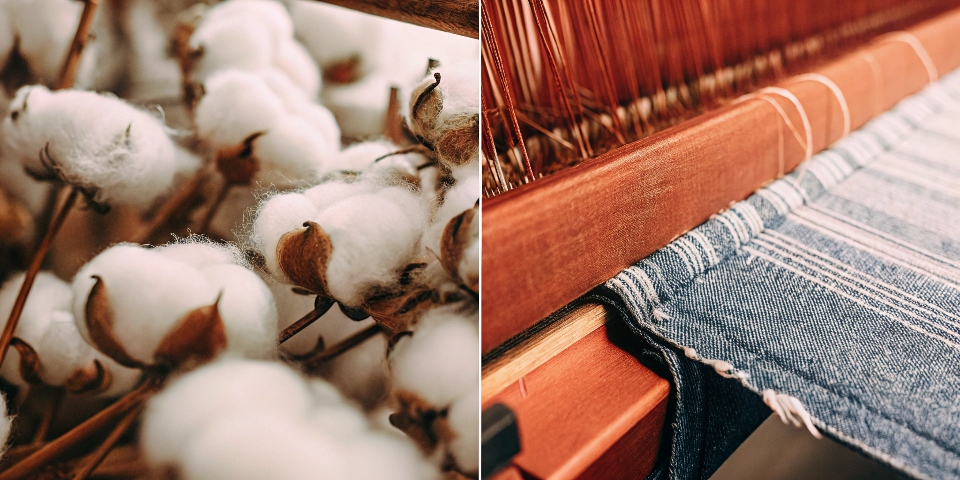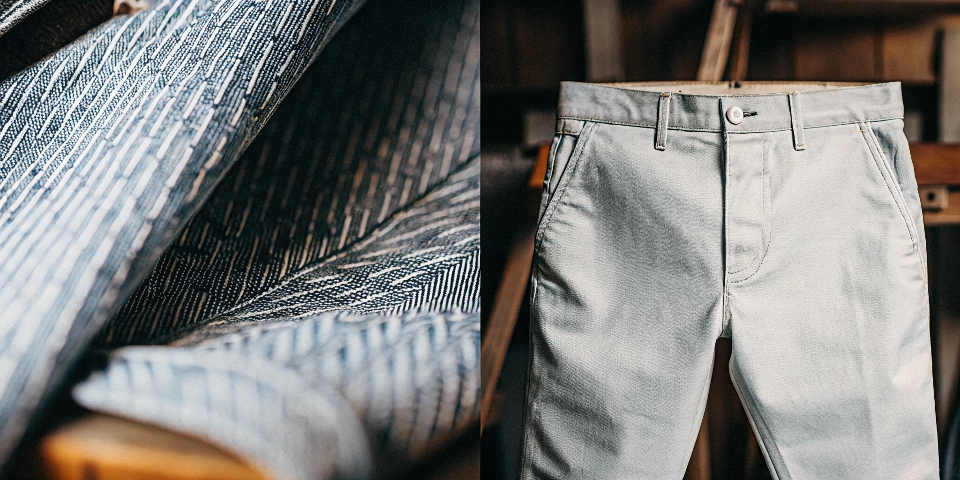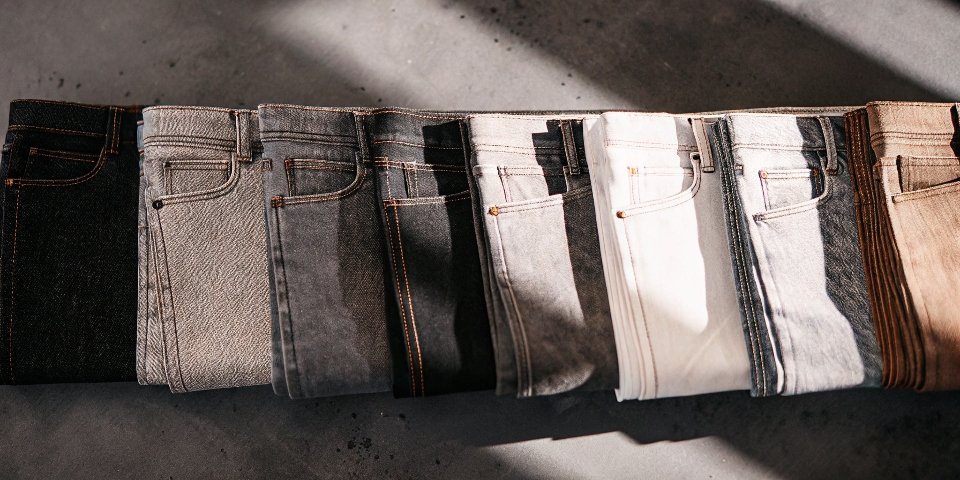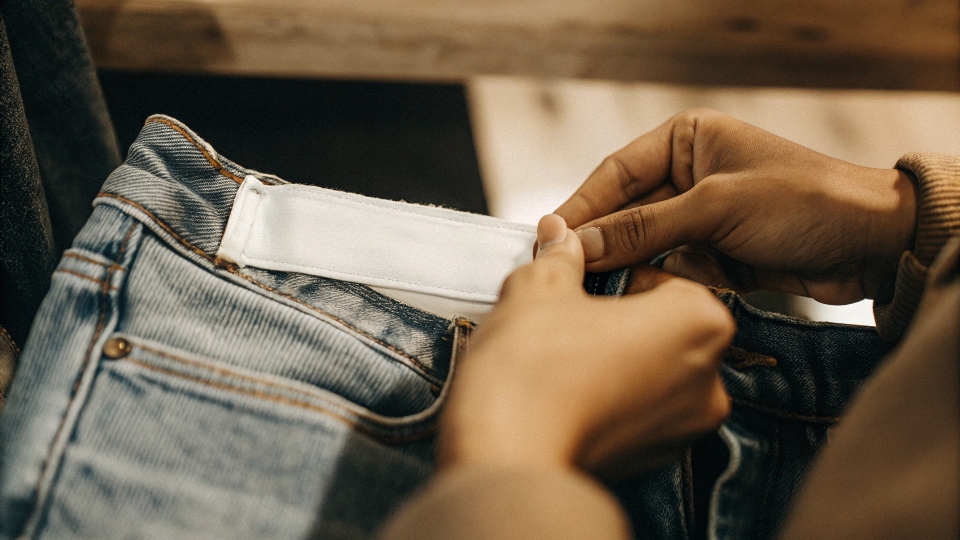You use the terms "cotton jeans" and "denim jeans" interchangeably. But a nagging voice wonders if you're missing a key technical difference, potentially undermining your expertise when speaking with suppliers.
All traditional denim is made from cotton, but not all cotton fabric is denim. Denim is a specific type of fabric woven from cotton thread in a strong diagonal pattern, giving jeans their signature look and durability.
This is one of the most fundamental concepts in my industry, yet it's often confused. As your insight correctly points out, cotton is the fiber, and denim is the fabric. Think of it like this: flour is an ingredient, but bread is the final product made with a specific recipe.
In my 20 years of running a denim factory, I've seen how understanding this simple distinction is the first step for any designer, like Dean, who wants to create truly exceptional jeans. Getting this right is the foundation of all denim knowledge.
Are cotton jeans the same as denim?
You describe a pair of pants as "cotton jeans" one day and "denim jeans" the next. You assume it means the same thing and that this is just a matter of terminology, but you want to be certain.
No, they are not the same thing. Denim is a specific type of fabric woven from cotton fibers. This means that while traditional denim jeans are a type of cotton pants, other cotton pants, like chinos or corduroys, are not denim jeans.
Let's break this down from the very beginning. Cotton is a natural fiber that grows in a soft, fluffy boll on a plant. After it's harvested, it's spun into yarn. That cotton yarn can be used to create thousands of different fabrics.
Denim is just one of those fabrics, but it has a very special structure that makes it unique. It's defined by a 3x1 twill weave1. This pattern creates the signature diagonal lines you can see if you look closely at your jeans.
It's also defined by its dye process: traditionally, the lengthwise yarns (the warp) are dyed indigo blue2, while the crosswise yarns (the weft) are left white.This specific combination of cotton fiber, twill weave, and warp/weft dyeing is what creates denim.
| Feature | Cotton | Denim |
|---|---|---|
| Definition | A natural plant fiber | A specific fabric weave |
| Form | A raw material spun into yarn | A finished fabric made from cotton yarn |
| Key Characteristic | Soft, breathable, versatile | Durable 3x1 twill weave with a diagonal pattern |
Which type of jeans material is best?
You're starting a new collection and you're faced with a wall of fabric options. 100% cotton, comfort stretch, performance blends. You're worried about making the wrong choice that will compromise the fit or feel of your final design.
The "best" material is determined by the jean's intended fit and function. For heritage durability and a classic look, 100% cotton denim is king. For form-fitting comfort, a cotton/elastane blend is essential. The choice serves the design.
There is no single "best" material; there is only the best material for the job. As a manufacturer, I fulfill orders for every possible combination. A designer focused on a rugged, Americana-inspired men's line will almost always specify heavyweight, 100% cotton denim3.
This fabric is incredibly durable, it breaks in over time, and it develops a unique fade pattern that is personal to the wearer. On the other hand, for a women's skinny jean, that same fabric would be impossible to wear.
For that client, I would use a denim with at least 2% elastane (Lycra or Spandex). This provides the stretch needed for a tight fit while still allowing the wearer to move comfortably. The "best" choice is a strategic decision.
| Material Blend | Primary Benefit | Ideal Jean Style |
|---|---|---|
| 100% Cotton | Maximum Durability, Authentic Fading | Classic Straight-Leg, Workwear, Baggy Fits |
| Cotton + Elastane4 | Comfort, Flexibility, Fit Retention | Skinny Jeans, Slim-Fit Jeans |
| Cotton + Lyocell/Tencel | Extreme Softness, Fluid Drape, Sustainable | Fashion-Forward Styles, Wide-Leg Trousers |
What is considered a denim jean?
You see lots of five-pocket pants made from blue fabric. Some feel soft like chinos, while others are stiff and rugged. You're not sure where the line is drawn for a garment to be called a true "denim jean."
A true denim jean is defined by two things: the material and the construction. It must be made from denim fabric (a cotton twill with an indigo warp and white weft) and typically follows a classic five-pocket construction pattern with rivets.
For an item to earn the "denim jean" title in my factory, it needs to meet a specific set of criteria. The material is the first and most important test. It must be denim. Not just any blue cotton fabric will do. It must have that diagonal twill weave.
The second part is the construction. While designers create endless variations, the classic jean is built on the "five-pocket5" model: two back pockets, two front pockets, and that small fifth "coin pocket" tucked inside the right front pocket.
Finally, the details matter. True jeans are reinforced with metal rivets at the stress points of the front pockets, a detail dating back to the original 1873 patent. The strong, folded "felled seam" on the inner leg is another hallmark of durable construction.
A garment that combines all these elements—denim fabric, five-pocket design, and heritage details—is undeniably a denim jean.
How can I identify the fabric content of my jeans?
You're holding a pair of jeans, trying to figure out if they're 100% cotton or a stretch blend. Relying on feel alone can be misleading, and you need to know the exact composition to understand how they will wear and fit.
The easiest and most accurate way is to check the care and content label sewn inside the jeans. By law, this label must list the fiber composition by percentage. For a quick test, you can also gauge the fabric's stretch.
Every garment is required to have a label that tells you two things: how to care for it and what it's made of. This is your most reliable source of information.
It will read something like "100% Cotton" or "98% Cotton, 2% Elastane." However, as someone who handles denim all day, I can often tell the composition with a few simple physical tests. You can do this too.
- The Stretch Test6: Firmly pull the fabric across the thigh. If there's almost no give, it's very likely 100% cotton. If it stretches easily, it's a blend. The amount of stretch tells you the percentage—a little give is 1-2%, while super stretchy can be 4% or more.
- The Feel Test7: Run your hand over the surface. 100% cotton has a sturdy, slightly coarse hand-feel when new. Fabrics blended with fibers like Tencel or Modal will feel significantly softer, smoother, and often have a more fluid drape.
| Identification Method | Clue You're Looking For | Likely Fabric Content |
|---|---|---|
| Care Label | The printed percentage list | The exact, confirmed composition |
| Stretch Test | How much the fabric gives when pulled | 100% Cotton (no give) vs. Blend (give) |
| Feel Test | Surface texture and softness | Cotton (sturdy) vs. Other Blends (soft) |
Conclusion
Cotton is the elemental fiber, while denim is the iconic, strong fabric woven from it. Knowing this core difference is the key to truly understanding the design, feel, and quality of jeans.
-
Understanding the 3x1 twill weave will enhance your appreciation for denim's unique structure and durability. ↩
-
Exploring the significance of indigo blue in denim can deepen your knowledge of fabric dyeing techniques and their cultural impact. ↩
-
Explore the unique qualities of 100% cotton denim, including durability and personal fading, perfect for rugged styles. ↩
-
Discover how Cotton + Elastane blend provides comfort and flexibility, making it ideal for stylish skinny jeans. ↩
-
This resource will explain the significance of the five-pocket design, a classic feature in denim jeans. ↩
-
Understanding the Stretch Test can help you identify fabric composition easily, ensuring you choose the right materials for your needs. ↩
-
Exploring the Feel Test will enhance your ability to distinguish between fabrics, leading to better clothing choices. ↩











